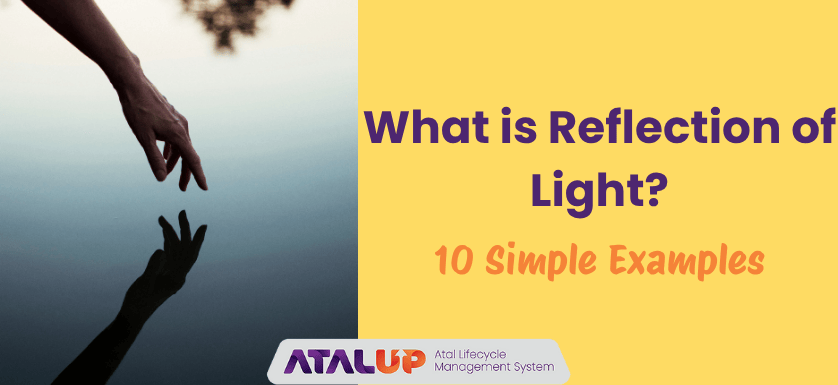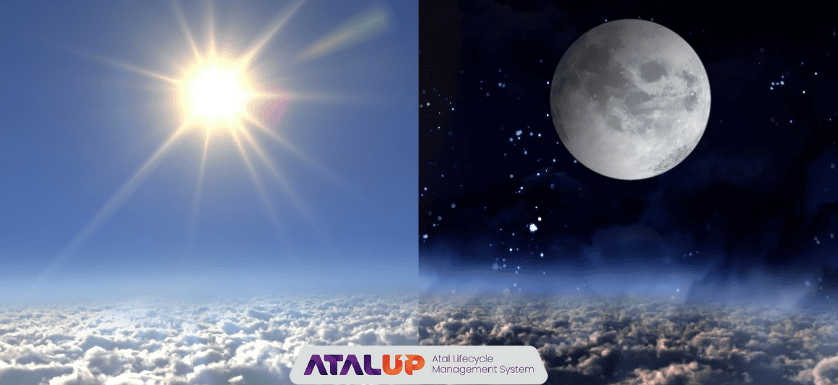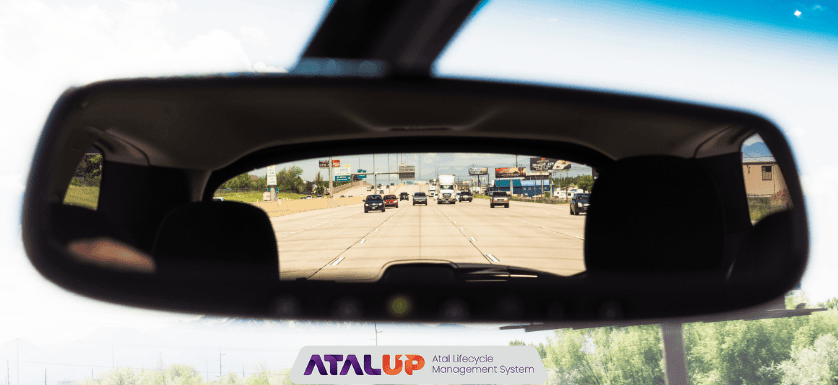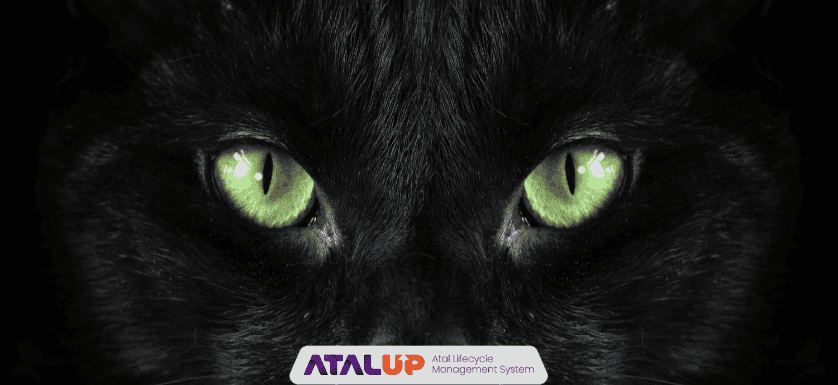
Have you ever looked into a mirror and thought, “Wow, that’s me!”? That simple act of seeing your own face is all thanks to reflection. But what if the image bends or shifts, like when you dip a spoon in a glass of water? That’s refraction. This blog is your quick and clear guide to understanding what is reflection of light, how it compares to refraction, and when to spot each one around you.
Let’s switch on the science and dive in!
What is Reflection of Light?
Simple Definition of Reflection
Reflection of light is when light hits a surface and bounces back. It doesn’t go through or get absorbed; it simply reflects. The most common example? A mirror.
When light rays hit a smooth surface like glass or still water, they reflect in a predictable way. This is why you can see your face clearly in a mirror but not on a crumpled sheet of paper.
Where Do We See Reflection of Light?
Reflection is everywhere. From car headlights bouncing off the road, to sunlight shimmering on a lake, to the glow of moonlight (yes, that’s sunlight reflected from the moon!). It helps us see objects that don’t emit their own light.
How Does Reflection Work?
The Law of Reflection
There are two basic rules:
- The angle of incidence equals the angle of reflection.
- The incident ray, reflected ray, and the normal all lie on the same plane.
This law is why we can angle mirrors in a periscope or bounce a laser precisely in a game of light maze.
Types of Reflection
- Regular Reflection: On smooth surfaces like mirrors, the light bounces in one direction, clear image.
- Diffuse Reflection: On rough surfaces like walls or paper, the light scatters, no clear image.
10 Real-Life Examples of Reflection of Light (Explained in Detail)
1. Looking in a Mirror
When you stand in front of a mirror, the light from your face hits the mirror’s surface and bounces back to your eyes, forming a clear image. This is called specular reflection, which happens on smooth, polished surfaces. It’s why mirrors are used in bathrooms, dressing rooms, and telescopes to give a crisp, accurate reflection of the object in front.
2. Seeing Moonlight
Ever wondered how the moon glows at night when it doesn’t have its own light? The moon reflects the sunlight that hits its surface. Since the moon’s surface is uneven, the light reflects in multiple directions, giving us that soft white glow. It’s a natural example of diffuse reflection, bright enough to light up the entire night sky.

3. Car Headlights on Wet Roads
After rain, roads become shiny and act like reflective surfaces. So when a car’s headlights hit the wet road, the light reflects directly into your eyes, making the road appear brighter or sometimes even blinding. This is regular reflection happening on a smoother-than-usual surface.
4. Shiny Table Surface
If you place a glass or steel plate on a table near a window, you’ll often see light spots or reflections on it. Polished wood, marble, or metal reflects light coming from lamps or the sun. The smoother the surface, the more accurate the reflection, making it easier to see the source of light.
5. Still Water Acting Like a Mirror
On a calm lake or pond, the surface becomes like a giant mirror. Light from the sky, trees, or mountains reflects off the water surface, creating a mirror image. This is why photographers love capturing reflections in water; it adds symmetry and beauty to the picture using nature’s own mirror.
6. Reflectors on Bicycles
Reflectors on the back of bicycles are made from special materials that bounce back light toward their source. So when a car’s headlights shine on the reflector, the light returns to the driver’s eyes, making the cyclist visible at night. These safety devices use reflection to save lives!
7. Rearview Mirrors in Cars
Rearview and side mirrors reflect the traffic behind your vehicle. They help drivers change lanes, reverse safely, or park. Some mirrors are even convex, curved outward, to give a wider view. Thanks to reflection, we stay aware of what’s happening behind us without turning around.

8. Sunglasses with Reflective Coating
Certain sunglasses come with a mirror coating on the outside, which reflects excess sunlight away. This keeps your eyes protected and reduces glare, especially during driving or skiing. These mirrored sunglasses work using reflection, helping you see clearly even in harsh daylight.
9. Laser Beam Bouncing on Mirrors
In science labs and light shows, you’ll see laser beams hitting multiple mirrors and changing direction sharply. This is because mirrors reflect the laser at exact angles, just like the law of reflection predicts. It’s also used in devices like laser cutters and scanners.
10. Animal Eyes at Night
Ever noticed how cats, dogs, or deer eyes glow in the dark when light hits them? That’s because of a special reflective layer called the tapetum lucidum behind their retinas. It reflects light back through the eye, improving their night vision, and making their eyes appear to shine in torchlight or car headlights.

Reflection vs Refraction – What’s the Difference?
You might think they’re the same. Both deal with light, right? But here’s where they differ, and it’s all about what the light does.
Refraction:
- Light bends when it moves from one material to another (like air to water).
- The object may look bent, shifted, or even magnified.
- Seen in: Rainbows, glasses, and magnifying glasses.
Reflection:
- Light bounces back from a surface.
- You see a direct image of the object.
- Seen in: Mirrors, water surfaces, shiny objects.
Summary Table: Reflection vs Refraction
| Feature | Reflection | Refraction |
| Light Behavior | Bounces back | Bends while passing through |
| Medium | Stays in the same medium | Changes medium |
| Example | Mirror, still water | Pencil in water, prism |
| Image Formed | Same size or flipped | Displaced, magnified, or bent |
| Real-World Use | Periscopes, headlights, sunglasses | Lenses, cameras, fiber optics |
Why Learning These Concepts is Important in STEM
Science is Not Just Theory, It’s Visibility
Reflection and refraction help us see the science around us. They’re part of physics, optics, and even computer graphics. Knowing these basics makes you better at understanding cameras, projectors, even VR!
Tinkering with Light in ATL Labs
In Atal Tinkering Labs, students can:
- Build DIY periscopes using mirrors
- Create kaleidoscopes to study reflections
- Use water, lenses, and prisms to explore refraction
- Understand how light interacts with different materials
This hands-on learning turns boring textbook definitions into cool classroom experiences.
Learn It Practically with the ATALUP App
Why Wait for an ATL Lab? Start Now at Home
The ATALUP STEM App lets you explore reflection vs refraction using home items. No need for expensive kits!
You’ll find:
- Daily experiments (like making a spoon look bigger)
- Guides for reflection and refraction activities
- Progress tracker to help you build a strong STEM habit
Whether you’re a student, parent, or teacher, ATALUP helps you make science fun and useful.
Download the app now
Android: Play Store and iPhone: Apple Store
Conclusion:
Understanding what is reflection of light is not just for science exams, it’s something we use daily. From how we see to how we capture photos, reflection and refraction shape our world. And now, with tools like ATALUP and ATL Labs, you can experience these concepts beyond the textbook.